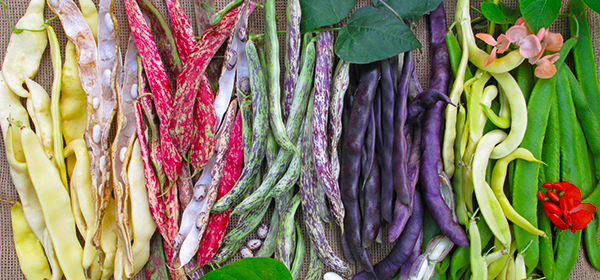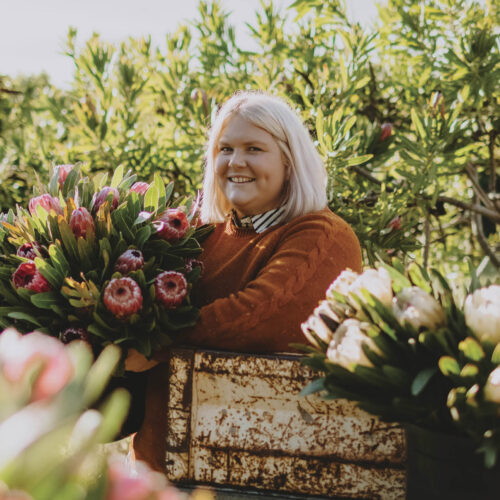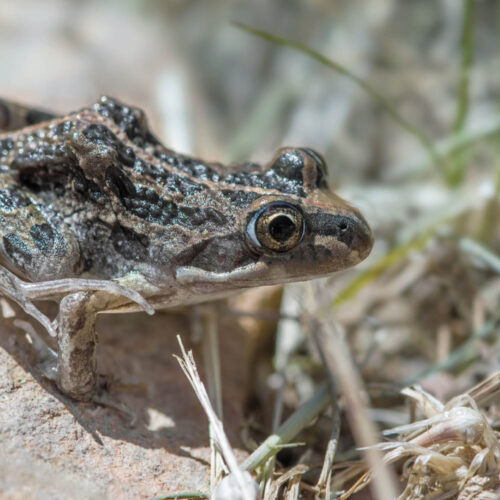Save our seeds
2012-08-19T03:13:43+10:00
Seeds are disappearing. In the century leading up to the year 2000, the world lost 75 per cent of the genetic diversity of its agricultural crops, the United Nations Food and Agriculture Organisation (FAO) estimates.
SIMON WEBSTER reports on how industrial agriculture has led to a dramatic erosion of the world’s seed diversity and how we can fight back.
Seeds are disappearing. In the century leading up to the year 2000, the world lost 75 per cent of the genetic diversity of its agricultural crops, the United Nations Food and Agriculture Organisation (FAO) estimates [1].
Lack of diversity isn’t just a problem for people who would like the opportunity to buy yellow carrots and purple broccoli. Seeds are invaluable resources.
“These resources stand between us and catastrophic starvation on a scale we cannot imagine,” wrote Jack Harlan, the late plant collector and professor of plant genetics, in his book Crops and Man.
For plant breeders, today’s seeds are the basis of tomorrow’s new varieties. And as we bid to grow food in a rapidly changing climate, we may need as much raw material as we can get.
John Torgrimson, executive director of the US Seed Savers Exchange, which conserves heirloom seeds, says every crop variety is potentially of vital importance.
“Humankind has been cultivating plants for thousands of years,” Torgrimson says. “Over this time, our ancestors have selected and grown thousands of fruits and vegetables and passed them on to others in an age-old tradition of gardening, seed saving and plant breeding.
“We need to consider this premise: what if that one variety we lose today is the ace in the hole we need 100 years from now because of its adaptability to conditions we cannot envisage at this time?”
Left: Seed banks and collections are gradually being plunered or lost.
Green revolution
“The main reason for this genetic erosion has to do with the modernisation of agriculture brought about by the ‘green revolution’,” ?says Torgrimson.
The green revolution – the industrialisation of agriculture, which took place in the 1940s, 50s and 60s – gave farmers chemical fertilisers, pesticides and hybrid seeds.
Hybrid maize had been on the market since the 1920s, but during the green revolution a new wave of hybrids took off. These hybrids generally gave farmers higher yields than the traditional varieties they ?had been using.
But hybrids also had a few characteristics that were of more benefit to seed companies than farmers or consumers.
Firstly, there was no point saving the seed of an F1 hybrid, because the next generation of seeds would not grow true to type – the plants lost all their predictability and had extremely variable qualities. If a farmer wanted more seeds that would perform just as well as the original hybrid, he had to go back to the seed seller and buy them all over again.
Secondly, seed companies found they could charge a lot more money for their hybrids.
And thirdly, says Jude Fanton, co-founder of Australia’s Seed Savers’ Network, the hybrids required a large amount of assistance to achieve those high yields.
“They yield more but you do have to give them the inputs of fertilisers and irrigation and protect them ?from competition with herbicides,” says Fanton.
Clive Blazey, founder of Victoria-based heirloom seed company The Diggers Club, says hybrids have become more dominant in the years since the green revolution.
“The advent of hybrid seeds has continued to increase and is also being used on crops, like tomatoes, that don’t give you a higher yield,” says Blazey.
“The price of seeds has gone up dramatically and the profitability of seed companies has gone up. Before the 1950s the seeds we grew used to be in the public commons. Consumers are at the end of this huge transfer of power to corporations.”
As supermarkets moved to centralised distribution systems, they found hybrids perfectly suited their needs. Seed companies developed varieties that could be shipped long distances and had long shelf lives. However, taste was not high on the list of priorities.
“The breeding of tomatoes has produced good shelf life at the supermarket but appalling flavour and freshness for the consumer,” Blazey says.
As more people shopped at supermarkets, the diversity of produce grown by farmers began to shrink. Seed companies dropped varieties that were not in commercial demand. Traditional varieties became scarce, or disappeared.
“The hybridisation process is a device to control seeds and increase profit,” says Blazey. “There’s a supermarket benefit but not a consumer benefit.”
Big business buyouts
Fuelled by profits from the green revolution, big business was ready to deliver another hammer blow to ?seed diversity.
Pesticide companies such as Monsanto began buying seed companies on a massive scale and pushing farmers towards their ?new product: genetically modified (GM) crops, created by adding genes from unrelated species into a ?plant’s genome using genetic engineering techniques.
The ETC Group, an international farmers’ rights and environmental organisation, in its 2008 report, Who Owns Nature?, revealed that buyouts had led to Monsanto claiming almost a quarter of proprietary seed sales worldwide.
The report pointed to an alarming concentration of power in the hands of a few corporations, which were increasingly forming alliances that turned them into ?a “tech cartel”.
“From thousands of seed companies and public breeding institutions three decades ago, 10 companies now control more than two-thirds of global proprietary seed sales,” the report says.
“From dozens of pesticide companies three decades ago, 10 ?now control almost 90 per cent of agrochemical sales worldwide… ?and six of the lead-ers in seeds are ?also six of the leaders in pesticides and biotech.”
GM stranglehold
Scott Kinnear, a Melbourne-based organic industry veteran and founder of the Safe Food Foundation, says if you are a multinational there are two ways to narrow the range of products on the market: “You can buy the seed companies and take seed off the market. And you can take research dollars away from non-GM research and give them to GM research.”
Both tactics have been employed, says Kinnear, who is among numerous organic campaigners critical of the strong commitments ?to GM research made by state governments and the CSIRO. This reasearch is often backed by funding from agritech companies.
Meanwhile, public funding for seed development and conservation around the world continues to steadily fall.
According to the Manifesto on the Future of Seeds, produced by the International Commission on the Future of Food and Agriculture, this public funding has reached such low levels “that even major seed collections are under threat and increasingly depend upon so-called public-private partnerships”.
“Every new step of corporate concentration of seed stocks comes with a reduction of seed varieties as well as a reduction of the number of breeders and scientists maintaining these seed stocks,” the manifesto says.
GM crops are controversial for many reasons. Anti-GM campaigners say they pose untested risks to human and environmental health, lead to increased pesticide use, and come with fiercely defended patents and licences, locking farmers into a system that perennially makes them buy more seed and more chemicals. [2]
GM crops also threaten seed diversity. Entire countries, such as the United States, now plant only a small number of corn, soy and cotton varieties, most of them GM. And the threat of contamination by GM pollen means farmers can find it difficult to avoid GM crops even if they want to.
In India, currently there is a backlash against GM crops and companies seeking to use traditional crops as the basis for new GM varieties. Farmers are fighting not just to hold onto their seeds and the control of their crops, but to resist the escalation of chemical agriculture.
In Australia, the Safe Food Foundation is raising funds to support West Australian farmer Steve Marsh, who is suing his neighbour for contaminating Marsh’s certified organic farm with pollen from GM canola, causing Marsh to lose his organic status.
“It’s a vitally important case for Australia and will set a precedent here and around the world,” says Kinnear.
“Down the track, contamination will build and build.”
Monsanto spokeswoman Keryn McLean says: “More than 1000 separate seed companies supply the commercial seed market globally. While Monsanto is one of the large commercial seed companies, what we offer is a small percentage of the world’s seeds…
“Farmers have successfully managed coexistence since long before the introduction of biotech crops and continue to do so today. Since the advent of biotech crops, both biotech and organic crop production have flourished. We have great confidence that neighbouring farmers will continue to find pragmatic solutions that maintain everyone’s choices.
“Our situation in Australia is a strong case study for this, given in both cotton and canola, farmers continue to have a wide range of seed variety options.”
What’s being done about it?
Companies selling open-pollinated varieties have been enjoying a renaissance in heirloom seeds in recent years. “There has been a huge swing by gardeners towards heirloom varieties,” says Blazey.
“It’s such a swing that even Monsanto and other big companies are trying to hybridise what most people regard as heirloom varieties, such as black tomatoes. The big companies want to control the small packet market as well.”
But perhaps the most important initiatives are those of the grassroots seed-saving movements such as Australia’s Seed Savers’ Network and the US Seed Savers Exchange, which was formed in 1975 with two people and two seeds and now has 13,000 members with 25,000 types of seeds. These seeds are being grown and shared, and are evolving as they adapt to their local conditions.
The seeds that these groups save are known as heirloom, heritage or traditional seeds. They are open-pollinated varieties, meaning they are pollinated naturally in the field, by insects, birds or wind.
Unlike hybrid varieties, open-pollinated varieties reliably grow true to type if you save their seeds and plant them the following season. Though there is some variability, you know more or less what you are going to get. “Consequently, heirlooms offer the best hope for genetic diversity in the years to come,” says Torgrimson.
In many developing countries, seed groups and aid organisations have been working over decades to hold back the tide of industrial agriculture and to preserve traditional seeds. For example, Seeds of Survival (seedsofsurvival.org) is a program started in Ethiopia that works with local farmers and traditional knowledge to develop better and more reliable seeds and crops.
One growing concern is that legislation written for industrial agricultural systems can sometimes make seed saving difficult. In Portugal, seed savers are campaigning against EU directives that prohibit the trading of seeds from one region to another. And in New Zealand, campaigners are fighting a food safety bill that could potentially put restrictions on seed savers.
Fortunately, the minority that cares about the right to save seeds is a vocal one. Blazey says: “It’s not a huge movement but it is important. It’s important for the big companies as well as the small ones because this is where our genetic future lies.”
From thousands of seed companies and public breeding institutions three decades ago, 10 companies now control more than two-thirds of global proprietary seed sales.
Local Seed Savers
The corporations may be seizing control of our seed, but in Australia and around the world, gardeners aren’t giving up without a fight.
Encouraged by permaculture co-founder Bill Mollison, Jude Fanton started up the Australian Seed Savers’ Network with her husband, Michel, back in 1986.
“People started sending us seeds,” says Jude. “Over the 22 years that we ran a seed bank, we collected 9000 examples. We multiplied them up ?and we distributed them as half a million packets.”
Ten years ago the Fantons decided there were enough skills and interest in seed saving to devolve the network’s power away from its base in the NSW Northern Rivers. Today there is no central Seed Savers’ Network seed bank, but 87 groups around Australia are saving and swapping seeds locally.
This has not only added security to the collection by spreading it far and wide, but has allowed traditional varieties to evolve and adapt to numerous different local conditions as seeds from the best and most disease- and pest-resistant plants are saved.
“We don’t believe varieties are stable or need to be stable,” says Jude. “Seed companies need them to be stable and uniform, to say ‘this is the same this year as last year’. People who grow their own food know that things change all the time.
“These groups have really taken off. Some meet every three months; others meet every week. Some have activities in schools, and lots are based in community gardens, which are perfect for seed saving because it’s all there right in front of everyone.”
The network offers numerous resources for would-be seed savers, including a YouTube channel and three publications – Seed to Seed: Food Gardens in Schools, the Local Seed Network Manual and The Seed Savers’ Handbook, featuring information on how to save the seeds of 117 vegetables, herbs and culinary flowers.
“The reason we’re losing varieties is because people are buying their food and buying their seeds,” explains Jude. “Even if you do buy your seeds, it’s a good idea to save the seeds next time. We’re not about seeing seeds as a commodity but as a gift from past generations that we can pass on ?to others.”
[1] http://www.fao.org/agriculture/crops/core-themes/theme/seeds-pgr/sow/sow2/en/
[2] http://www.safefoodfoundation.org/GM%20foods.html






